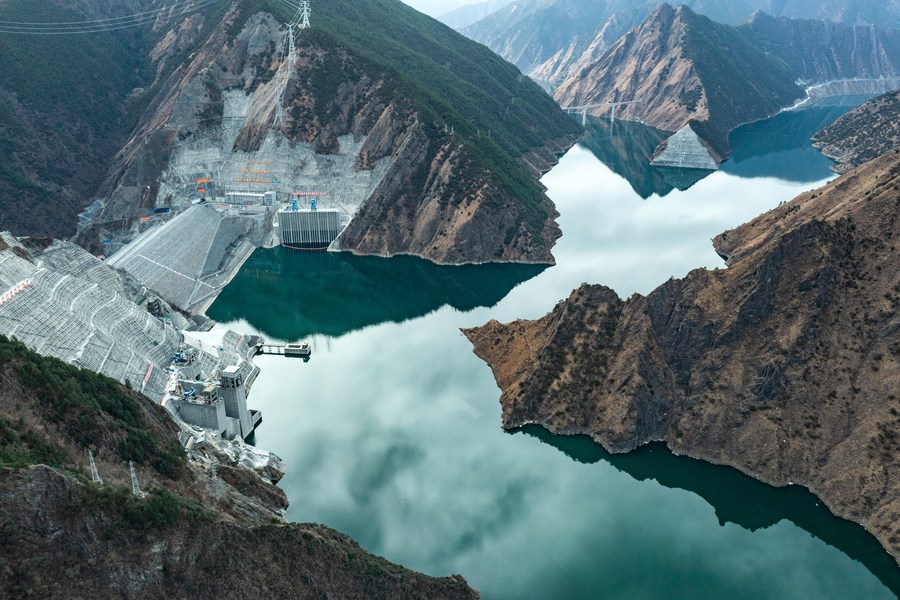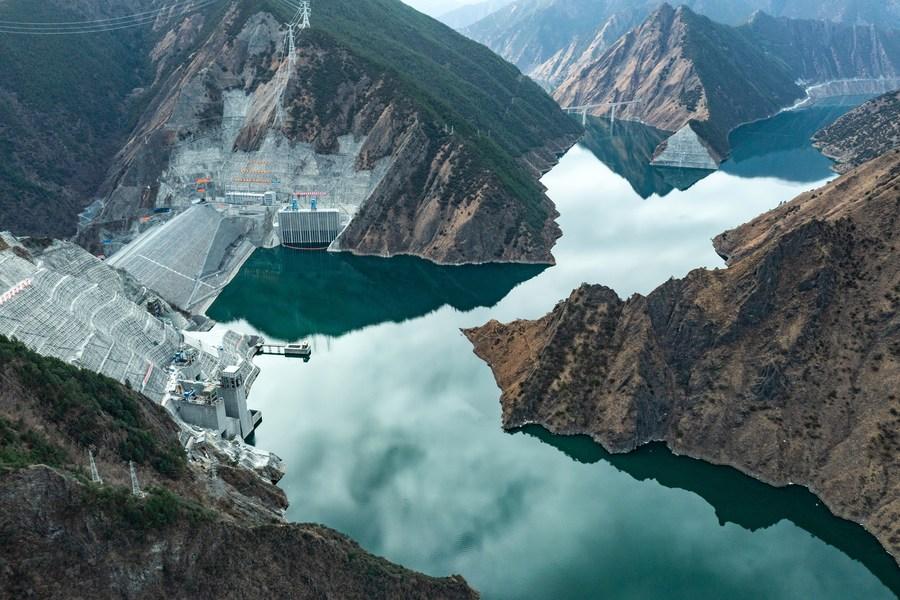
Aerial photo taken on March 17, 2022 shows Lianghekou hydropower plant on the Yalong River in Tibetan Autonomous Prefecture of Garze, southwest China's Sichuan Province. (Xinhua/Shen Bohan)
BEIJING, May 27 (Xinhua) -- China is projected to be the largest carbon trading market around the world as its carbon trading is on continuous improvements driven by related support policies, reported Securities Daily Thursday quoting an expert.
According to a latest report on the status and future trends of carbon pricing released by the World Bank, the global carbon pricing revenue registered about 84 billion U.S. dollars in 2021, up nearly 60 percent from 2020, and a total of 68 direct carbon pricing mechanisms, including 36 carbon taxes and 32 carbon emission trading systems, are currently in operation.
On July 16, 2021, China's national carbon market, a major institutional innovation to facilitate emissions reduction, started trading, and the opening price for carbon quotas was 48 yuan per tonne (metric ton).
After nearly a year of trading, on May 26, 2022, the opening price for carbon quotas in the national carbon market reached 59 yuan per tonne, 22.91 percent higher than the initial opening price in the market.
According to the statistics of the Hainan Green Finance Institute, as of December 31, 2021, the first compliance cycle of the national carbon market had been successfully completed, during which more than 2,000 key emitters in the power industry have been included, covering nearly 4.5 billion tonnes of carbon dioxide emissions.
Under the targets of peaking carbon emissions and carbon neutrality, the trade of carbon emission rights allows orderly allocation of carbon emission quotas in every link of the industry chain, and actively promotes carbon reduction of the whole industry chain.
Particularly, high-carbon industries need to relieve the pressure of carbon reduction through carbon emission rights trading, and the increase in the cost of carbon emission will promote high-carbon enterprises to take more independent carbon reduction actions.
The participants of the carbon trade market include not only enterprises from power generation, petrochemical and other industries, but also financial institutions like banks and trusts and social organizations, and the contract standards and trading rules in the market are designed in the direction of the futures market, said Liu Xiangdong from the China Center for International Economic Exchanges (CCIEE).
Currently, the regulators are speeding up the construction of the carbon futures market in line with the development of the carbon spot market, and industry insiders have been calling for carbon futures to be listed, added Liu.
To ensure the effective and healthy operation of China's carbon market, efforts should be made to further optimize related systems and measures for the market, formulate relevant carbon quota allocation methods according to the development planning of different industries, and further promote the development of green and low-carbon technologies, noted Yuan Jingting, a researcher with the Hainan Green Finance Institute.
"China's carbon market trading is gradually improving, related policies around the carbon market will become clearer, and China is expected to become the world's largest carbon trading market, shouldering the due responsibilities and obligations of a big power," Yuan believed.
(Edited by Gu Shanshan with Xinhua Silk Road, gushanshan.1987@163.com)




 A single purchase
A single purchase









